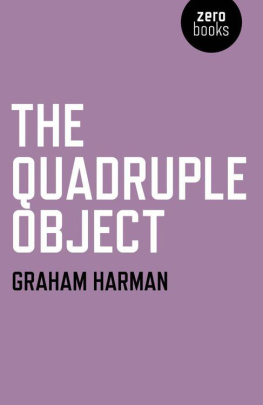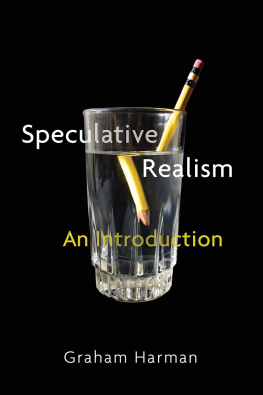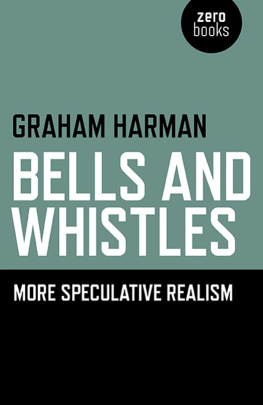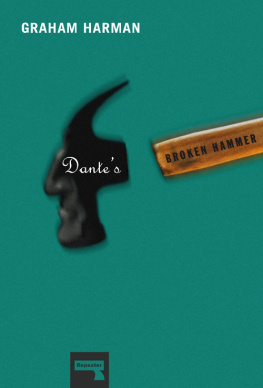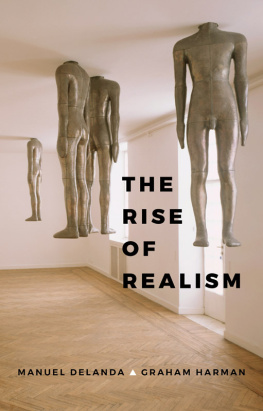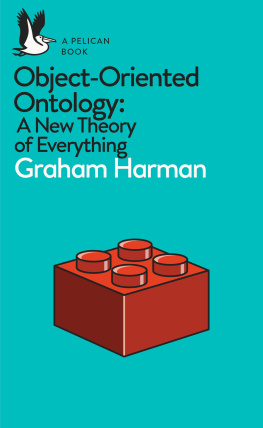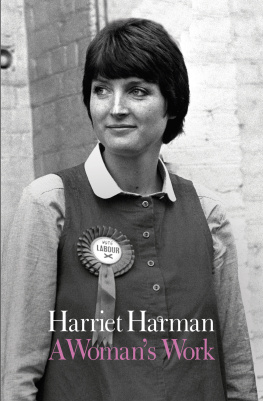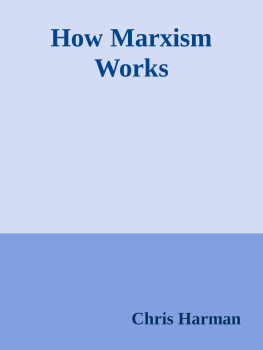Graham Harman - The Quadruple Object
Here you can read online Graham Harman - The Quadruple Object full text of the book (entire story) in english for free. Download pdf and epub, get meaning, cover and reviews about this ebook. year: 2011, publisher: Zero Books, genre: Science. Description of the work, (preface) as well as reviews are available. Best literature library LitArk.com created for fans of good reading and offers a wide selection of genres:
Romance novel
Science fiction
Adventure
Detective
Science
History
Home and family
Prose
Art
Politics
Computer
Non-fiction
Religion
Business
Children
Humor
Choose a favorite category and find really read worthwhile books. Enjoy immersion in the world of imagination, feel the emotions of the characters or learn something new for yourself, make an fascinating discovery.
- Book:The Quadruple Object
- Author:
- Publisher:Zero Books
- Genre:
- Year:2011
- Rating:3 / 5
- Favourites:Add to favourites
- Your mark:
- 60
- 1
- 2
- 3
- 4
- 5
The Quadruple Object: summary, description and annotation
We offer to read an annotation, description, summary or preface (depends on what the author of the book "The Quadruple Object" wrote himself). If you haven't found the necessary information about the book — write in the comments, we will try to find it.
The Quadruple Object — read online for free the complete book (whole text) full work
Below is the text of the book, divided by pages. System saving the place of the last page read, allows you to conveniently read the book "The Quadruple Object" online for free, without having to search again every time where you left off. Put a bookmark, and you can go to the page where you finished reading at any time.
Font size:
Interval:
Bookmark:


First published by Zero Books, 2011
Zero Books is an imprint of John Hunt Publishing Ltd., Laurel House, Station Approach, Alresford, Hants, SO24 9JH, UK
office1@o-books.net
www.o-books.com
For distributor details and how to order please visit the Ordering section on our website.
Text copyright: Graham Harman 2010
ISBN: 978 1 84694 700 1
All rights reserved. Except for brief quotations in critical articles or reviews, no part of this book may be reproduced in any manner without prior written permission from the publishers.
The rights of Graham Harman as author have been asserted in accordance with the Copyright, Designs and Patents Act 1988.
A CIP catalogue record for this book is available from the British Library.
Design: Stuart Davies
Printed in the UK by CPI Antony Rowe
Printed in the USA by Offset Paperback Mfrs, Inc
We operate a distinctive and ethical publishing philosophy in all areas of our business, from our global network of authors to production and worldwide distribution.
The composition of this book was enabled by a Faculty Research Grant from the American University in Cairo, authorized by the good wishes of Provost Lisa Anderson and Vice Provost Ali Hadi, to whom I offer my gratitude.
Further thanks are due to Professor Michael Flower of Portland State University, who expertly prepared the ten helpful diagrams.
Authors Preface to the English Edition
This book first appeared in French as LObjet quadruple: Une mtaphysique des choses aprs Heidegger (Paris: PUF, 2010), in a fine translation by Olivier Dubouclez of Lille. The history of the project shaped the very structure of the book, and may be of interest to the reader.
For several years Quentin Meillassoux had expressed the wish to see some of my work appear in French. His initial hope was to encourage someone to translate my first book, Tool-Being: Heidegger and the Metaphysics of Objects (Chicago: Open Court, 2002). But to publishers in Paris this could only sound like a costly commitment to an author not yet well known in France. Even after Meillassoux himself became co-editor of the MtaphysiqueS series at PUF, the situation looked discouraging. For a time the project seemed out of reach.
One day, the idea occurred to me of working in reverse. Rather than tracking down the funds to translate a pre-existing book, I could first find a grant and then write a new book to fit it: much like an architect bound to a specific budget and plot of land. The idea immediately excited me, given my view that ideas are strongest when shaped by the pressures of local circumstance. Not surprisingly, Meillassoux himself also saw merit in the proposal. Immediately I applied for a research grant at my home institution, the American University in Cairo. The time has not come to tell the bureaucratic adventure story of the grant process itself. Suffice it to say that the intervention of two enlightened administrators saved this book from a premature death (I have thanked them elsewhere in this book). The check was cashed in Cairo and calculations were made in Paris. Soon I was informed by Meillassoux of how long the work should be, in accordance with PUFs standard translator salary rates. Though French publishers work according to signes rather than words, the requested length amounted to approximately 47,000 words: a nice, brisk little book. Luckily our translator was already enlisted, and Meillassoux proved correct in his assurances of Dubouclezs skill as a philosopher, a speaker of English, and a French stylist.
But the timing was difficult. For the summer of 2009 I was already committed to a lecture in Croatia, and two lectures and a wedding in England. Thus I was left with only six weeks to write the entire book. Making a virtue of necessity, I decided to live-blog the writing of the book for my existing internet readership (see doctorzamalek2.wordpress.com). The presence of an audience would supply useful pressure to work hard on the book each day, with the added advantage of being able to give my graduate student readers an inside look at how books are written. From late July through the end of August I posted daily updates on my progress. For curiositys sake, I also timed the writing of the book, and in this way discovered that the final draft of The Quadruple Object took 86 hours and 34 minutes to complete.
In addition to constraints on the length of the book, some of its content was shaped by the nature of the audience. The French public was then almost entirely unfamiliar with my work. This meant that I needed to recapitulate the main ideas of my earlier books in such a way as to bring French readers up to speed. But there could not be too much recapitulation, or else none of my Anglophone readers would be interested in the inevitable English edition that now lies before you. In this way the unusual content of this book was born: a highly compressed version of my established ideas in the earlier chapters, with forays into new terrain towards the end of the book. I also tried to write more concisely and directly than usual, mimicking one of the best-known strengths of elegant classical French prose. Ultimately I also deleted a few of the more bizarre jokes and images from the French version, after finding that they did not come across especially well in that language. Naturally, I have retained those passages in the English version: keep an eye out for the bigamist South Pacific cult leader. Otherwise, I made changes to the manuscript in both languages according to the excellent advice of both Meillassoux and Dubouclez. An extra five thousand words were added at their recommendation, and Dubouclez had the remarkable kindness to translate this additional material free of charge. Finally, my friend Michael Flower (whom I have never met except via email) engineered the attractive diagrams found in the book. Adding these three people to the two administrators in Cairo who saved the grant, that makes at least five people other than myself who made crucial contributions to the very existence of The Quadruple Object . If we add the main figures I dealt with at Zer0 Books (especially Tariq Goddard and Mark Fisher) the number grows even larger.
As a philosophy blogger I often provide writing advice to students. One of the things I like to tell them is that the two biggest enemies of writing, the two worst causes of writers block, are nothingness and infinity . Nothingness refers to the blank paper or computer screen with which we begin; infinity is the self-imposed pressure to say something of limitless scope and significance. My way of addressing these two closely linked threats is to focus on all the constraints on a project that lie beyond my control: the rules I absolutely must follow without having chosen them, and which are obviously neither nothing nor infinite. Simply by identifying all the operative constraints on a given project, ones room for free decision is narrowed and focused to a manageable range, and the specters of nothingness and infinity soon dissipate in the rising sun. When that happens, it becomes possible to summarize your lifes work in a mere six weeks of writing. Never have I written something as constrained by budget and audience as the book now in your hands. Nonetheless, it is a perfect distillation both of the familiar thoughts that have occupied me for the past twenty years, and the unfamiliar ones that seem ready to occupy me for the twenty years to come.
Introduction
Instead of beginning with radical doubt, we start from naivet. What philosophy shares with the lives of scientists, bankers, and animals is that all are concerned with objects . The exact meaning of object will be developed in what follows, and must include those entities that are neither physical nor even real. Along with diamonds, rope, and neutrons, objects may include armies, monsters, square circles, and leagues of real and fictitious nations. All such objects must be accounted for by ontology, not merely denounced or reduced to despicable nullities. Yet despite repeated claims by both friends and critics of my work, I have never held that all objects are equally real. For it is false that dragons have autonomous reality in the same manner as a telephone pole. My point is not that all objects are equally real, but that they are equally objects . It is only in a wider theory that accounts for the real and unreal alike that pixies, nymphs, and utopias must be treated in the same terms as sailboats and atoms. If this approach reminds some readers of the Austrian theories of objects of the late nineteenth century (Twardowski, Meinong, Husserl) at least two major differences will appear in the course of this book: (1) objects according to my model have a fourfold structure that is drawn from Heidegger; (2) I treat causal relations between non-human objects no differently from human perception of them. But it should also be noted that I do not adopt Heideggers distinction between object (which he uses negatively) and thing (which he uses positively). The word object acquires in the Brentano School a generalizing power too valuable to be sacrificed to the cult rituals of Heideggerian terminology.
Next pageFont size:
Interval:
Bookmark:
Similar books «The Quadruple Object»
Look at similar books to The Quadruple Object. We have selected literature similar in name and meaning in the hope of providing readers with more options to find new, interesting, not yet read works.
Discussion, reviews of the book The Quadruple Object and just readers' own opinions. Leave your comments, write what you think about the work, its meaning or the main characters. Specify what exactly you liked and what you didn't like, and why you think so.

